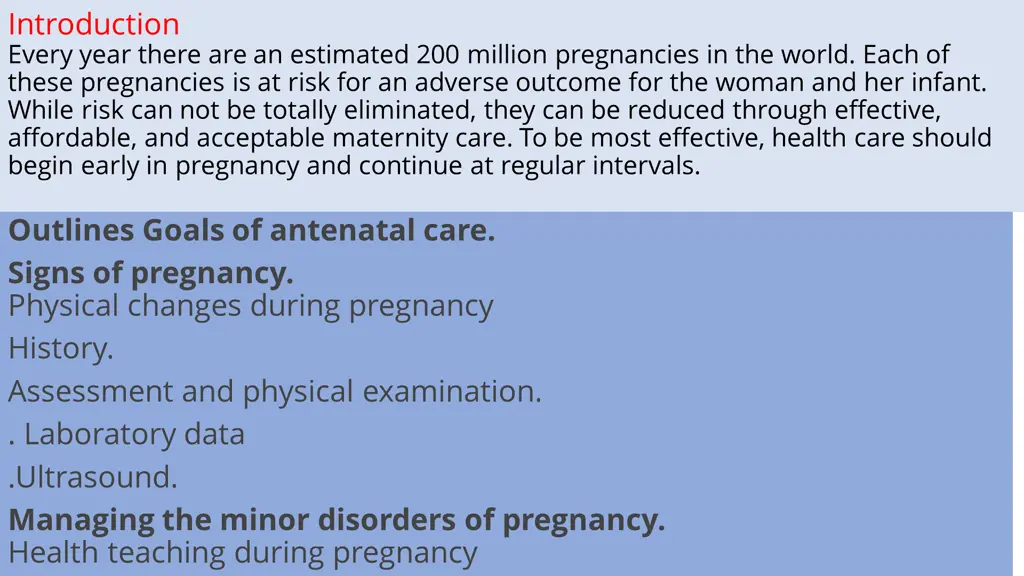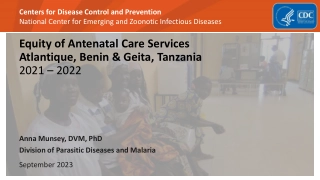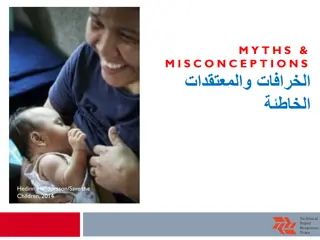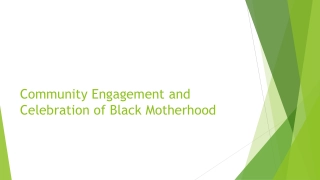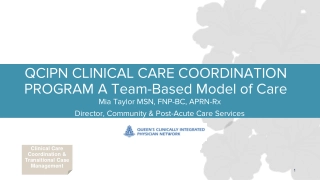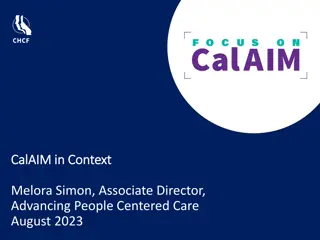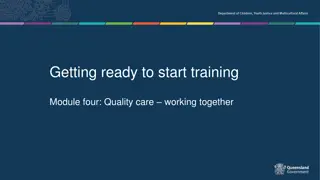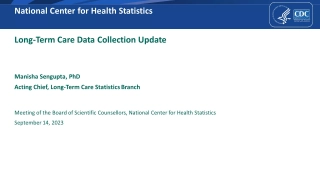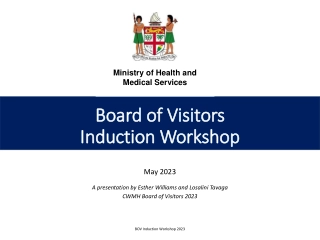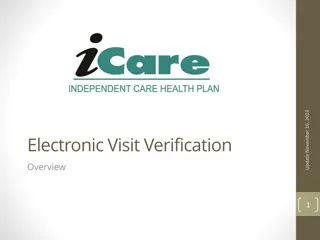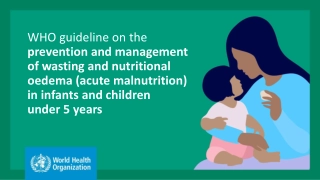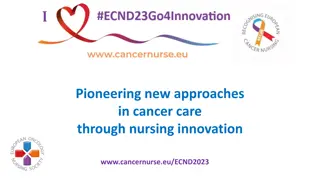Comprehensive Guide to Antenatal Care for Expecting Mothers
Learn about the importance of antenatal care, including assessment, physical changes, health teaching, and managing minor pregnancy disorders. Discover goals and guidelines for reducing maternal and perinatal risks. Antenatal care is crucial for maternal and infant well-being.
Download Presentation
Please find below an Image/Link to download the presentation.
The content on the website is provided AS IS for your information and personal use only. It may not be sold, licensed, or shared on other websites without obtaining consent from the author. Download presentation by click this link. If you encounter any issues during the download, it is possible that the publisher has removed the file from their server.
Presentation Transcript
Introduction Every year there are an estimated 200 million pregnancies in the world. Each of these pregnancies is at risk for an adverse outcome for the woman and her infant. While risk can not be totally eliminated, they can be reduced through effective, affordable, and acceptable maternity care. To be most effective, health care should begin early in pregnancy and continue at regular intervals. Outlines Goals of antenatal care. Signs of pregnancy. Physical changes during pregnancy History. Assessment and physical examination. . Laboratory data .Ultrasound. Managing the minor disorders of pregnancy. Health teaching during pregnancy
Advice, reassurance and education Common symptoms include nausea, heartburn, constipation, shortness of breath, dizziness, swelling, backache, abdominal discomfort and headaches. Generally, these reflect physiological adaptations to pregnancy but may become extremely debilitating for the pregnant woman. Information regarding smoking, alcohol consumption and the use of drugs (both legal and illegal) during pregnancy is extremely important. In some populations almost one-third of women smoke during pregnancy, despite its association with fetal growth restriction, preterm labour, placental abruption and intrauterine fetal death. A major role of antenatal care is to help women limit these harmful behaviors during pregnancy, for example by inclusion in smoking cessation programs. Alcohol or illegal substance misuse may require more specialized skills from support services including perinatal mental health teams.
Goals of antenatal care To reduce maternal and perinatal mortality and morbidity rates. To improve the physical and mental health of women and children. To prepare the woman for labor, lactation, and care of her infant. To detect early and treat properly complicated conditions that could endanger the life or impair the health of the mother or the fetus. Normal pregnancy duration post conception is 266 days or 38 weeks. Menstrual dating,LMP=280days or 40 weeks, assume as menstrual cycle -28days. Nagels s rule- LMP minus 3 months plus 7days
Antenatal Care Definition Is a planed examination and observation for the woman from conception till the birth .Or Antenatal care refers to the care that is given to an expected mother from time of conception is confirmed until the beginning of labor Assessment and physical examination Component of antenatal care Assessment: The initial assessment interview can establish the trusting relationship between the doctor and the pregnant woman. Establishing rapport Getting information about the woman s physical and psychological health, Obtaining a basis for anticipatory guidance for pregnancy .
History Welcome the woman, and ensure a quite place where she can express concerns and anxiety without being overheard by other people. Personal(Identification data)This include: woman s name, age, occupation, address, and phone number. marital status, duration of marriage, Religion , Nationality and language, Housing and finance Menstrual history: Any previous treatment of menstrual A compete menstrual history is important to establish the estimated date of delivery. It includes: Last menstrual period (LMP).Age of menarche. Regularity and frequency of menstrual cycle. Contraception method. Any previous treatment of menstrual. Expected date of delivery (EDD) is calculated as followed:1st day of LMP 3 months +7 days, and change the year.
Current problems with pregnancy : Ask the patient if she has any current problem, such as:- Nausea & vomiting. Abdominal pain Headache. Urinary complaints. Vaginal bleeding. Edema. Backache Heartburn. Constipation Obstetrical history: This provides essential information about the previous pregnancies that may alert the care provider to possible problems in the present pregnancy. Which includes: Gravida, para, abortion, and living children. Weight of infant at birth & length of gestation. Labor experience, type of delivery, location of birth, and type of anesthesia. Maternal or infant complications.
Laboratory data Test Purpose Blood group To determine blood type . CBC detect anemia. (RPR) rapid plasma regain: To screen for syphilis Rubella: To determine immunity Urine analysis :To detect infection or renal disease. protein, glucose, and ketones Papanicolaou (pap) test .To screen for cervical cancer Chlamydia: To detect sexual transmitted disease. Glucose :To screen for gestational diabetes
Schedule of antenatal care A medical check up every four weeks up to 28 weeks gestation, every 2 weeks until 36 weeks of gestation visit each week until delivery More frequent visits may be required if there are abnormalities or complications or if danger signs arise during pregnancy
Danger signs of pregnancy Vaginal bleeding including spotting. Persistent abdominal pain. Sever & persistent vomiting. Sudden gush of fluid from vagina. Absence or decrease fetal movement. Sever headache. Edema of hands, face, legs & feet. Fever above 100 F( greater than 37.7 C).Dizziness, blurred vision, double vision & spots before eyes. Painful urination.
Immunization :immunization against -tetanus to prevent the risk for her and her fetus. Also, it is important that every pregnant mother should receive a tetanus vaccination card with her first tetanus dose and keep it to record subsequent doses
Antenatal care involves checking maternal health and fetal well being,assessing risk factor,screening for disease and abnormality and providing education and advice. Prenatal advice before conception to assess maternal health. First visit,complete obstetrical history,physical examination and labaratory investigation. Discuss the following with the patient Nutrition. Smoking. Medication. Exercise. Proper use of seat belt. Need for good dental care. Anticipated schedule of visit for prenatal care. Anticipated date of delivery. Symptomsto be reported to the physician. Medical risk factor for,ex diabetes,hypertension,epilepsy,cardiac disease,history of thromboembolism and autoimmune disorder. Genetic factor,family history of genetic disorder Serious complication during pregnancy(preterm.antepartum haemorrhage,stillbirth,hypertension). Advanced maternal age. History of infertility.
Height and weight (body mass index) Anaemia Cardiovascular examination Breast examination Lower limb examination Abdomanal examination Presence of scar Fundal height Lie Presentation Fetal heart ascultation Fetal growth monitoringFull blood count. Blood group and RH factor. Urinanalysis to detect aymptomatic bacteriuria. Screening test for gestational diabetes. Rubella status. Virology screen.HBsAg,HCV,HIV. Antibody screen. Additional test may be required based on the patient history. Edema
In low risk pregnancy,the ante natal visit which required,booking(8-10weeks),at 18- 20weeks at the time of anomaly scan and at 29,35,41 weeks for routine review. women with medical or obstetrical complication the shedule of subsequent visit as required by specific condition. For 9 Estimated weeks of gestation Edema Fundal height Urine for albumine and aceton Danger sign and symptom wellbeing Weight Blood pressure Presentation Fetal movement Antenatal care plan Test of fetal growth and
At booking to determine gestational age,number of sac,fetal heart At 18-20weeks anomaly scan At 28-34 weeks to detect placental site,fetal growth monitoring At 40weeksBegins with preconception counseling Involves continuous risk assessment Represents a key time for preventative counseling and interventions Ultimate goal: Healthy outcome for mom and baby Antenatal care involves checking maternal health and fetal well being. Women are advised about lifestyles matters such as smooking,.exercise, diet,and folic acid supplement. At the first visit,women who require urgent referral should be identified. An early ultrasound scan for dating can be very helpful. Booking involves a detailed history, measurment of weight and height and urine analysis. Abdominal palpation will detect the extremes of abnormal fetal growth.
RATIONALRATIONAL TO HELP MOTHER MAINTAIN WELL BEING, & ACHIEVE A HEALTHY OUTCOME FOR HERSELF & HER INFANT 3 OBJECTIVESOBJECTIVES risk pregnancies maternal Pre-pregnancy counseling & early pregnancy care Detection & treatment maternal/or fetal abnormalities fetal complications Identification of high risk & low Screening & prevention of stander & Evaluation of ANC 4 PRE-PREGNANCY COUNSELING 5 EARLY PREGNANCY CARE Vomiting Nutrition Bowel habits Coitus Drug Smoking Screening for infection 6 BOOKING VISIT Examination LMP........................EDD........................ Gestional age Past obstetric, medical, & surgical Routine tests Advice 7 HISTORYHISTORY IDENTIFICATION OF RISK FACTORS & CATEGORIZED WHICH PATIENTS HIGH OR LOW RISK 8 EXAMINATIONEXAMINATION General Obstetric examination : Inspection. Palpation. Auscultation 9 ROUTINE TESTS Blood group & Rh typing CBC Urinalysis MSU Hb Ag Rubella Syphilis U/S 10 FOLLOW UP EXAMINATION Fetal growth FHR BP Weight gaining Urine testing Regular check up 11 SCREENING TESTS Anemia GDM Antibodies S.alpha-fetoprotein Hb electrophoresis Chest x ray 12 PERINATAL MORTALITY RATE
Objectives of antenatal care Maintenance of health of mother during pregnancy. Identification of high risk cases and appropriate management. Prevent development of complications. Decrease maternal and infant mortality and morbidity. Remove the stress and worries of the mother regarding the delivery processWhat is antenatal period? The antenatal period covers the time from conception until birth.
